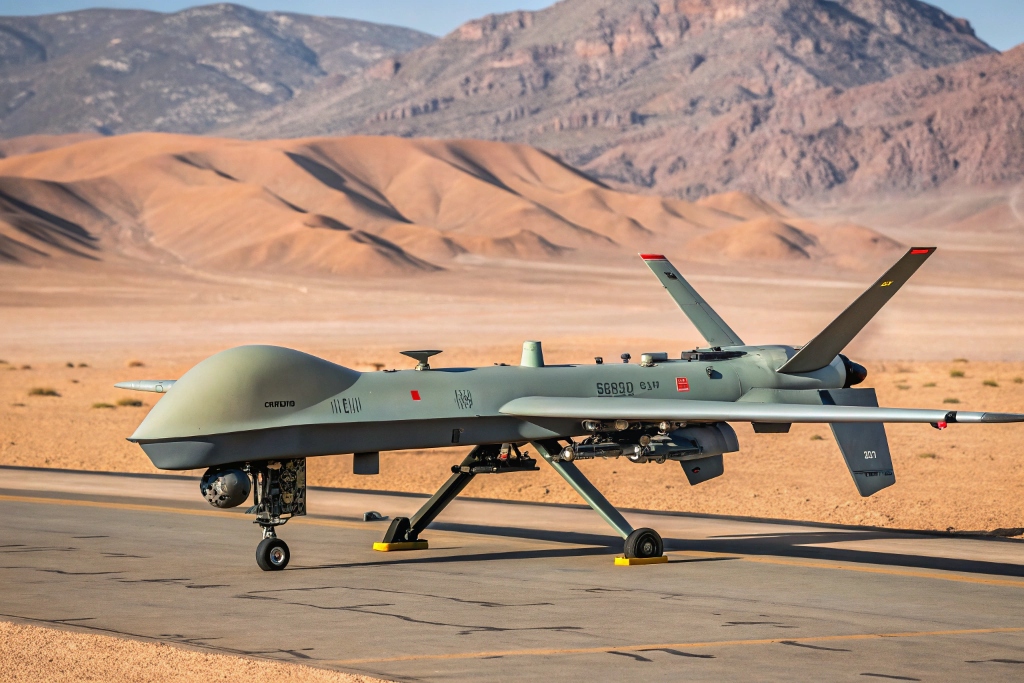The global military landscape is undergoing a seismic shift, driven by rapid advancements in drone technology. Military drones, also known as unmanned aerial vehicles (UAVs), are redefining defense priorities by enabling real-time intelligence, high-precision targeting, and reduced battlefield risk. As traditional conflicts give way to asymmetric warfare and rising geopolitical tensions, defense forces across the world are increasingly turning to drones as essential components of their strategic and tactical operations.
According to new market research, the global military drone market is projected to grow from USD 15.80 billion by 2030, up from USD 22.81 billion in 2025, at a CAGR of 7.6%. This robust growth reflects a fundamental transformation in how nations approach national security, surveillance, and combat readiness.

Download PDF Brochure @
https://www.marketsandmarkets.com/pdfdownloadNew.asp?id=221577711
Strategic Drivers of Change
Several key factors are propelling this market forward:
- Evolving Threat Landscapes: Non-traditional adversaries and unconventional warfare tactics have made flexibility and rapid response more critical than ever. Drones offer unmatched advantages in agility, endurance, and precision.
- Geopolitical Tensions: Cross-border conflicts and regional instability in areas such as Eastern Europe, the Middle East, and the Indo-Pacific are accelerating defense procurement programs, with drones at the forefront.
- Technology Advancements: Breakthroughs in artificial intelligence, autonomy, sensor integration, and swarm technology are enabling new drone capabilities—from autonomous surveillance to coordinated loitering munition strikes.
- Cost-Effectiveness: Compared to manned platforms, drones offer a lower-cost, lower-risk solution for high-stakes missions.
North America Leads the Way
North America, particularly the United States, is expected to dominate the military drone market through 2030. This dominance is fueled by substantial defense budgets, government-backed R&D initiatives, and strategic collaboration with the private sector. Leading defense contractors—including Northrop Grumman, Raytheon Technologies, General Atomics Aeronautical Systems, and Teledyne FLIR—are at the forefront of innovation in ISR (intelligence, surveillance, and reconnaissance), combat, and multi-domain drone applications.
Programs such as loitering munitions, ISR fleet upgrades, and autonomous swarm systems are not only reinforcing national security capabilities but also setting global benchmarks for military drone deployment. In parallel, export-friendly policies are helping U.S. companies expand their footprint in allied markets, further accelerating the global proliferation of advanced UAV systems.
A Global Strategic Imperative
Around the world, countries are recalibrating their defense postures in response to the rapidly expanding role of UAVs. From border patrol and counterterrorism operations to battlefield dominance and strategic deterrence, drones have evolved from niche assets into core elements of national defense infrastructure.
Ask for Sample Report @
https://www.marketsandmarkets.com/requestsampleNew.asp?id=221577711
As this market continues to mature, the demand for more sophisticated, interoperable, and AI-enabled drones will intensify. Governments and defense contractors that prioritize UAV development will be better positioned to respond to emerging threats and maintain a strategic edge in a fast-changing global security environment.